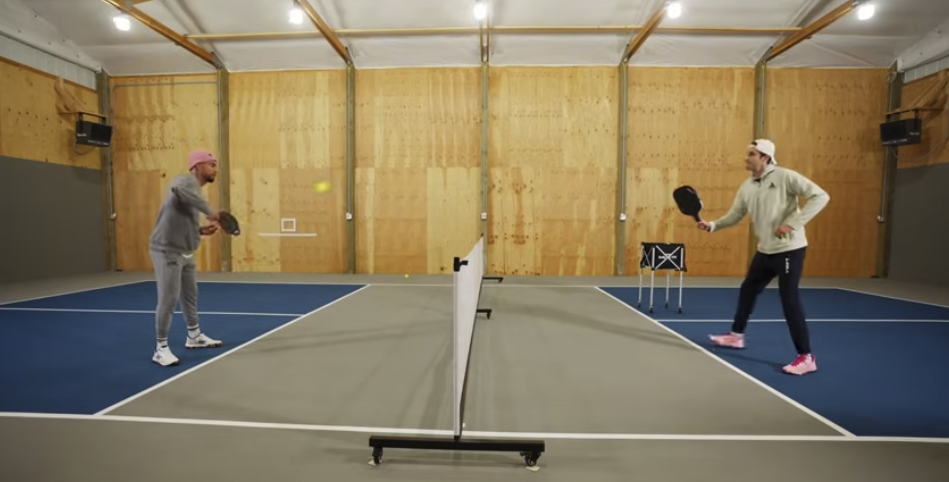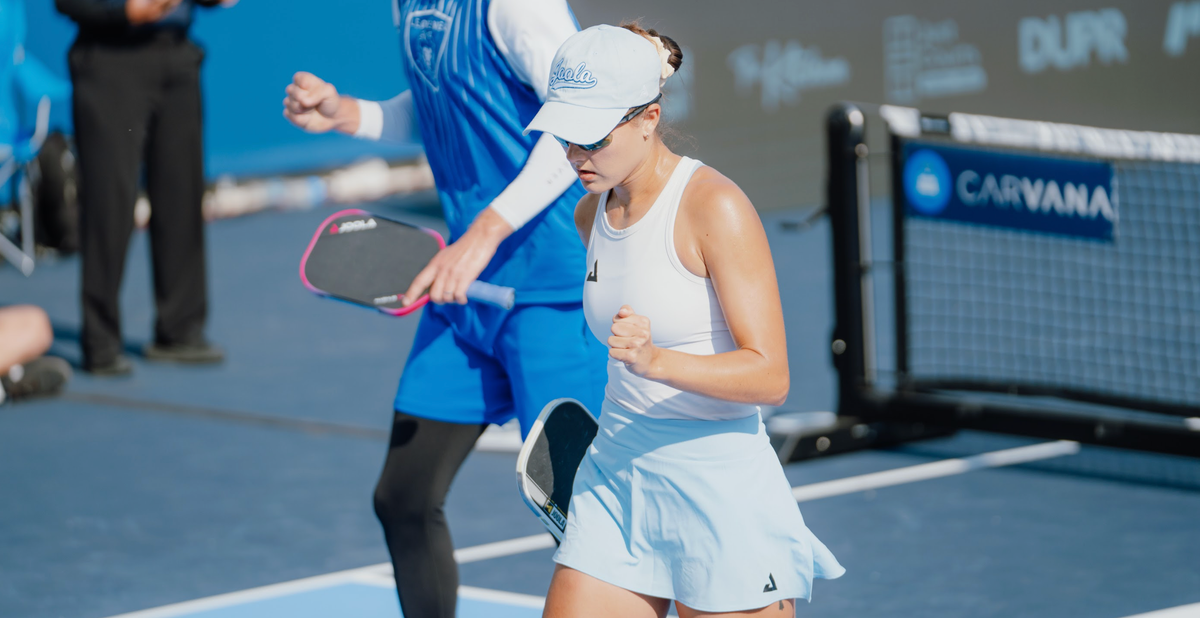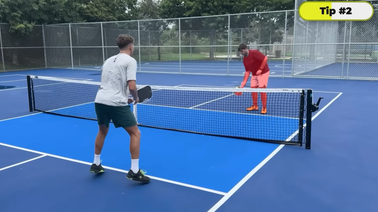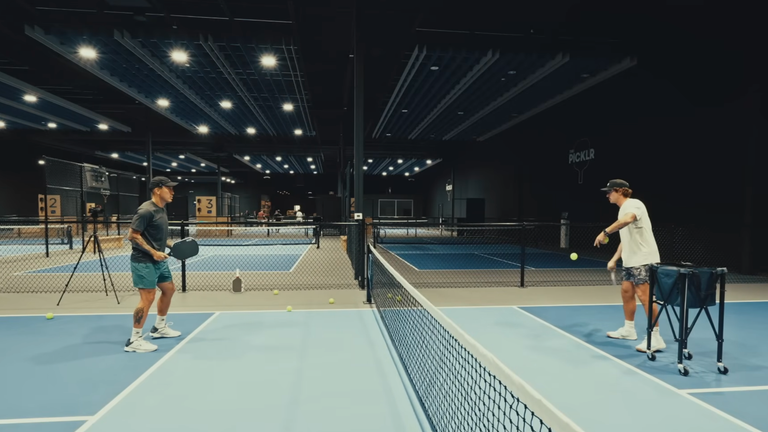
'Our main motto is just putting balls in play, being scrappy, being disciplined,' says PPA pro Tyson McGuffin
Tyson McGuffin may be known for his "Ferrari Forehand," but the longtime PPA pro is wise enough to recognize when to slow a point down to regain control.
Here, he walks us through a couple pointers for smarter defense at the kitchen line.
Tip #1: Use the lift dink to bring the point back to neutral
If you're engaged in a dink rally but find yourself getting moved around or frequently pushed out of position, you're not dictating the point... you're surviving it.
Rather than fight fire with fire, the sounder approach is to calm things down and get back to neutral footing. For this, Tyson recommends the lift dink.
"Our main motto is just putting balls in play, being scrappy, being disciplined, and utilizing the lift dink," he says.

How to hit a lift dink:
- The tip of the paddle is pointed down at the court
- Your arm mechanics are shoulder-heavy, arm straight, leading with the back of your hand or your palm, depending whether it's forehand or backhand
- Aim the ball to drop shallow over the net, this means you can hit a bit slower and higher and not get burned
- Look to take balls out of the air when possible
- You're not looking for winners – aim toward the middle of the court
Like Tyson said, the goal of a lift dink is to consistently put the ball back in play and live to fight another day. No frills. Nothing fancy. Just a smart pickleball shot.
Tip #2: Utilize the block volley when outgunned
If you're not comfortable engaging in a hands battle with your opponent, or you feel they're dictating the pace of play too often, it's a great time to lean heavily on a block volley.
Unlike a punch volley – quite literally a forehand or backhand jab at the ball in an effort to hit a winner – the block volley is strictly defensive in nature, often called upon when a ball is sped up in your direction and you're either too slow or not in position to hit a counter.
How to hit a block volley:
- Keep your paddle up and positioned in front of your chest – 95% of block volleys are hit on the backhand side
- Recognize and anticipate when a speed-up is coming
- Let the ball travel into your body, a few inches in front of your chest
- Keep a looser grip and let the paddle face do all the work, absorbing the ball and gently redirecting it back over the net
- The rest of your body should be still and quiet, no arm or torso movement, legs and feet firmly set on the court
Remember: Playing it safe doesn't have to mean playing to lose.
Recognize when you have an advantage at the kitchen line and launch an attack. When you don't, play smart defense, pull the momentum back to neutral, and look for your moment to regain the edge.

Love Pickleball? Join 100k+ readers for free weekly tips, news & gear deals.
Subscribe to The DinkGet 15% off pickleball gear at Midwest Raquet Sports









